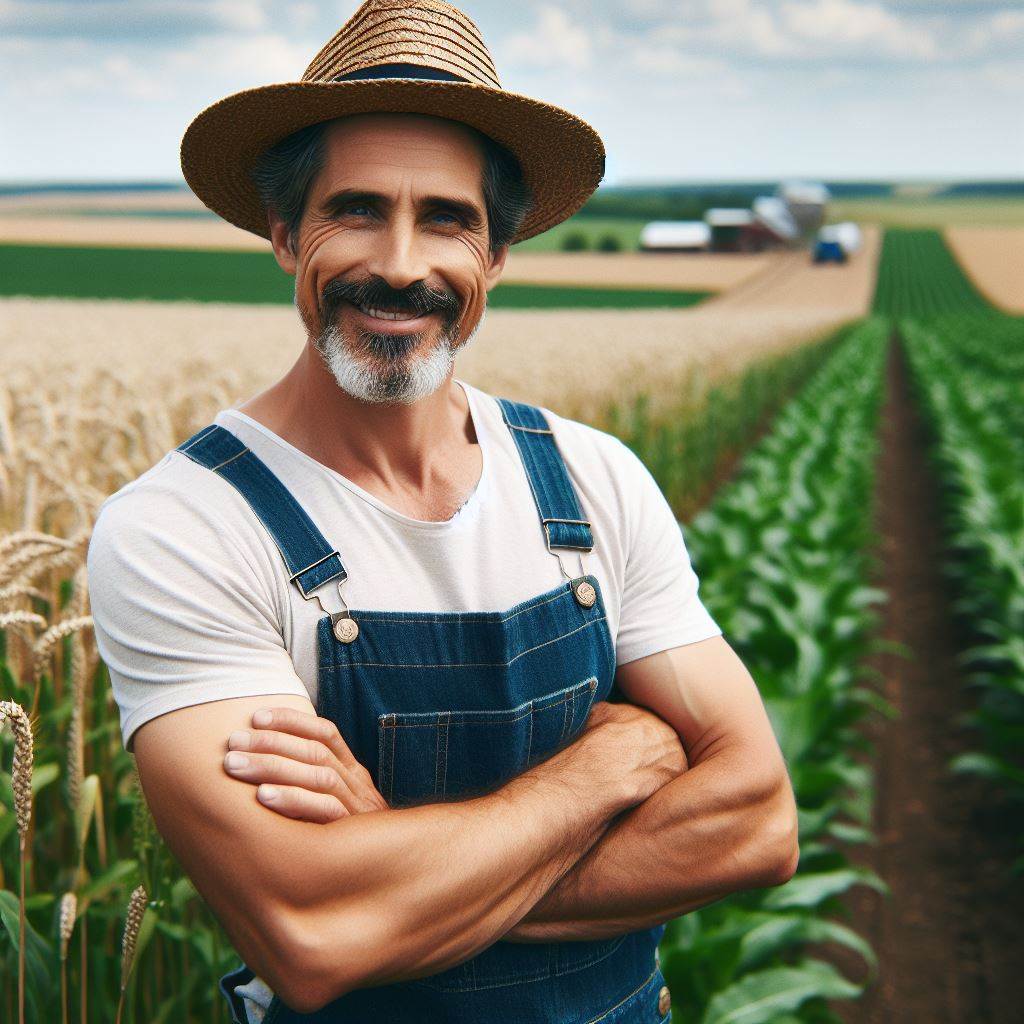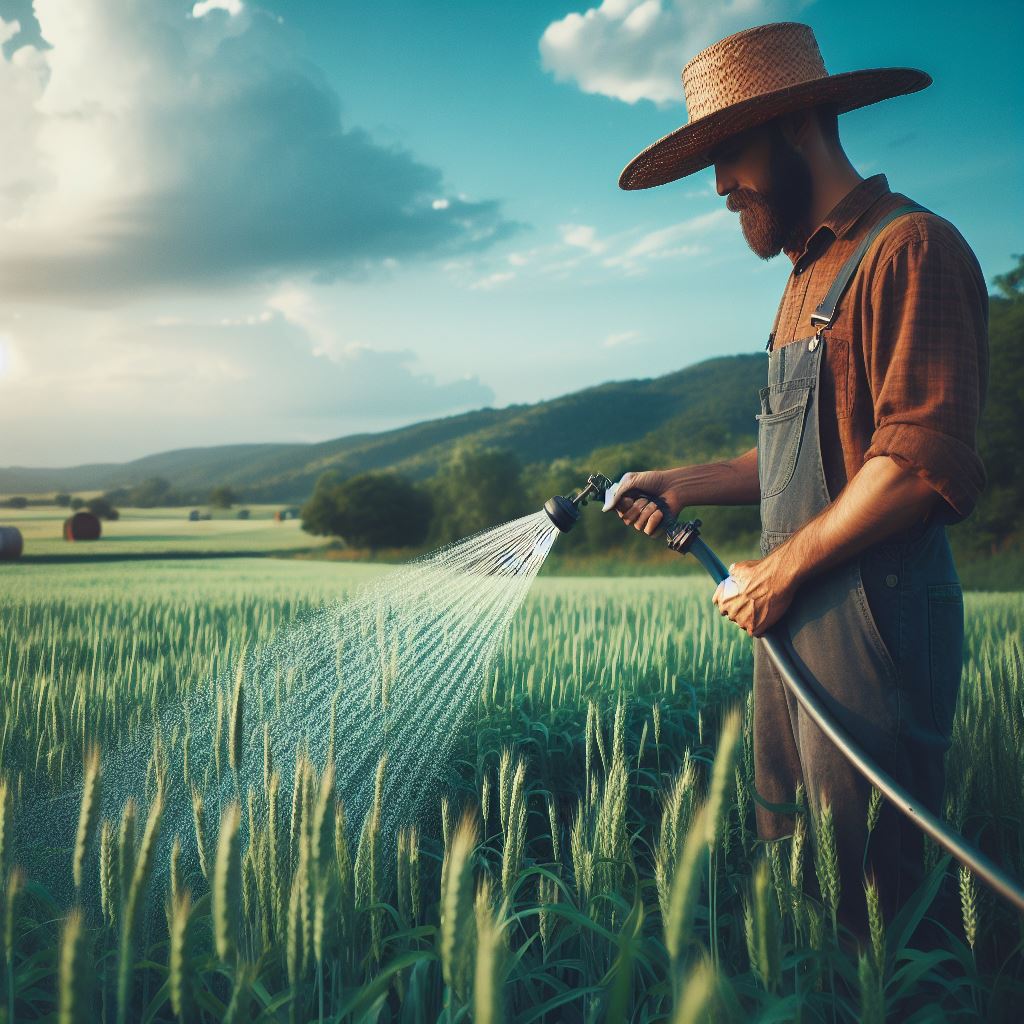Introduction
Brief introduction to the topic of no-till farming
No-till farming, a method without ploughing, is gaining popularity in the agricultural industry.
No-till farming is a sustainable agricultural practice that minimizes soil disturbance by avoiding plowing. It retains soil structure, moisture, and nutrients while reducing erosion and carbon loss.
This method promotes biodiversity, conserves water, and mitigates climate change, offering a promising approach to sustainable farming for modern agriculture.
Importance of discussing the pros and cons of this farming method
It is important to discuss the pros and cons of this farming technique to understand its impact and suitability.
Discussing the pros and cons of no-till farming is essential for informed decision-making in agriculture. It allows farmers to weigh the benefits, such as soil conservation and cost savings, against potential drawbacks like weed management challenges.
Understanding both sides fosters sustainable farming practices tailored to specific contexts and goals.
Pros of No-Till Farming
- Improved soil health: No-till farming retains crop residue, enhancing organic matter and soil structure.
- Water conservation: Maintaining soil surface cover reduces water evaporation, leading to efficient water utilization.
- Reduced erosion: With minimal soil disturbance, no-till farming mitigates soil erosion and prevents nutrient loss.
- Weed control: Crop residue acts as a natural mulch, suppressing weed growth and reducing the need for herbicides.
- Decreased fuel consumption: Without ploughing, farmers require less fuel, leading to cost savings and reduced carbon emissions.
Cons of No-Till Farming
- Initial investment: Adopting no-till farming may require purchasing specialized equipment, potentially increasing production costs.
- Pest management: No-till systems can enable pests and disease buildup, demanding proactive pest management strategies.
- Slow adoption: Farmers face challenges in transitioning from traditional methods to no-till farming due to a learning curve and resistance to change.
- Yield variability: Initial yield reductions may occur during the transition phase, although long-term benefits outweigh this drawback.
No-till farming offers numerous advantages, including improved soil health and water conservation. However, it also presents challenges such as initial investment and pest management.
Understanding and carefully considering the pros and cons helps farmers make informed decisions about adopting this sustainable farming practice.
Read: Soil Health: Key to Good Crops
Pros of No-Till Farming
No-till farming offers numerous advantages that contribute to sustainable and profitable agriculture.
Conservation of Soil
No-till farming helps retain soil moisture, reducing the need for irrigation.
By reducing soil erosion, no-till farming helps protect the topsoil and prevent its loss.
No-till farming improves soil structure, allowing better water infiltration and root penetration.
The preservation of soil microbiota enhances nutrient availability and promotes plant health.
Environmental Benefits
Furthermore, no-till farming provides significant environmental benefits.
No-till farming leads to a decrease in greenhouse gas emissions, combating climate change.
Transform Your Agribusiness
Unlock your farm's potential with expert advice tailored to your needs. Get actionable steps that drive real results.
Get StartedConserving water resources is achieved through reduced evaporation and runoff in no-till fields preserving this essential resource.
No-till farming prevents water pollution by minimizing the use of chemical fertilizers and pesticides protecting both waterways and aquatic life.
Preserving soil health and preventing erosion helps protect biodiversity and ecological balance.
Cost-Effectiveness
Apart from environmental advantages, no-till farming proves to be cost-effective for farmers.
No-till farming reduces labor and machinery costs as less tilling and plowing are required. This not only saves time but also reduces the wear and tear on equipment, leading to maintenance savings.
By adopting no-till practices, farmers can achieve fuel savings due to less frequent field operations.
No-till farming has the potential to increase crop yields by promoting healthier soil conditions.
Long-term economic benefits are observed as soil fertility and productivity are sustained over time.
In summary, the pros of no-till farming are compelling. This practice promotes the conservation of soil, offers environmental benefits, and proves to be cost-effective for farmers.
By adopting no-till techniques, farmers can embrace sustainable agriculture while maximizing productivity and profitability. Embracing no-till farming is a step towards a more sustainable future for agriculture.
Read: Climate-Smart Agricultural Tactics
Gain More Insights: High-Tech Farming for Climate Resilience
Cons of No-Till Farming
No-till farming, despite its many advantages, also presents several challenges and disadvantages that farmers need to consider before adopting this method.
Initial Challenges and Investments
- Specialized equipment is a prerequisite for successful no-till farming. The use of machinery designed for this technique is essential in preserving soil structure and preventing soil compaction. Acquiring and maintaining this equipment can involve significant costs.
- Transitioning to no-till farming often requires higher initial investment costs compared to conventional methods. Farmers may need to invest in specialized machinery, seed drills, and herbicides. These additional expenses may strain their financial resources.
- Farmers who have been using conventional farming methods may face a learning curve when transitioning to no-till farming. They need to acquire knowledge and skills specific to this technique, such as understanding crop rotations, residue management, and correctly using cover crops to maximize the benefits of no-till farming.
- The transition from conventional farming methods to no-till farming can pose potential difficulties. Farmers may encounter challenges related to soil compaction, weed control, and managing residues left by previous crops. It requires a shift in mindset and adaptability to effectively implement no-till practices.
Weed Management
- No-till farming can lead to a potential increase in weed pressure compared to conventional farming. The lack of soil disturbance provides suitable conditions for weed growth and proliferation. Farmers need to be prepared to face this challenge and employ effective weed control strategies.
- To control weed growth in no-till systems, farmers may become dependent on herbicides. Herbicides are often used to suppress weed growth before and during the growing season. However, excessive reliance on herbicides raises concerns about environmental impact and the development of herbicide-resistant weeds.
- No-till farmers must adapt and implement specific techniques for effective weed control. Strategies include using cover crops, crop rotation, and targeted herbicide applications. These measures help manage weed pressure and prevent the establishment of herbicide-resistant weeds.
Disease and Pest Management
- No-till farming can increase the risk of certain pests and diseases. The absence of soil disturbance and the accumulation of crop residues create an environment favorable for pests such as slugs, snails, and certain diseases. Farmers should be aware of these risks and take proactive measures to prevent their occurrence or minimize their impact.
- Implementing appropriate strategies for prevention and control is essential in managing diseases and pests in no-till farming. These strategies may include practicing crop rotation, enhancing natural predators, using resistant varieties, and employing integrated pest management techniques. Maintaining good farm hygiene and monitoring systems are also crucial to prevent the spread and outbreak of diseases and pests.
In fact, while no-till farming offers many benefits, such as improved soil health, reduced erosion, and increased water retention, it also presents challenges.
Farmers should carefully consider the initial investments, weed management, and disease and pest control issues associated with no-till farming.
By implementing appropriate strategies and techniques, farmers can mitigate these disadvantages and successfully adopt and practice this sustainable farming method.
Read: Sustainable Farming Myths Debunked

You Might Also Like: The Future of Farming: AI & Climate Change
Comparison with Conventional Farming Methods
Soil Health and Productivity
- No-Till farming promotes higher soil quality by minimizing soil erosion and preserving organic matter.
- Conventional farming methods often lead to decreased soil quality due to erosion and nutrient depletion.
- No-Till farming helps improve soil structure and biodiversity, creating a healthier ecosystem.
- Conventional farming methods require tilling, which disrupts soil structure and reduces beneficial organisms.
Environmental Impacts
- No-Till farming significantly reduces greenhouse gas emissions compared to conventional farming.
- Conventional farming methods release large amounts of carbon dioxide through tillage practices.
- No-Till farming conserves water by minimizing runoff and retaining moisture in the soil.
- Conventional farming methods often result in excessive water usage and runoff, leading to water pollution.
Economic Considerations
- No-Till farming requires less labor compared to conventional methods, reducing labor costs.
- Conventional farming methods involve more manual labor, leading to higher labor expenses.
- No-Till farming eliminates the need for expensive machinery like plows and tillers.
- Conventional farming methods require costly machinery, contributing to higher machinery costs.
- No-Till farming promotes long-term profitability by improving soil health and reducing input costs.
- Conventional farming methods may initially show higher profitability but often have long-term negative effects.
Basically, comparing No-Till farming with conventional farming methods reveals numerous advantages.
No-Till farming benefits soil health and productivity by improving soil quality, structure, and biodiversity. In contrast, conventional farming methods often result in decreased soil quality, erosion, and nutrient depletion.
Additionally, No-Till farming has lower environmental impacts compared to conventional methods. It reduces greenhouse gas emissions and conserves water, addressing two significant environmental concerns.
Economically, No-Till farming reduces labor and machinery costs, making it a more viable option for farmers.
Although conventional farming methods may initially seem more profitable, No-Till farming’s long-term benefits and improved profitability make it a better choice.
Overall, No-Till farming offers a sustainable and efficient approach to agriculture, ensuring a healthier environment, better soil quality, and long-term economic benefits.
Showcase Your Farming Business
Publish your professional farming services profile on our blog for a one-time fee of $200 and reach a dedicated audience of farmers and agribusiness owners.
Publish Your ProfileRead: Boost Yields with Crop Diversity
Explore Further: Organic Farming: Adapting to Climate Change
Conclusion
Recap of the pros and cons of no-till farming
In the end, no-till farming offers several advantages and disadvantages that farmers need to carefully consider. On the positive side, it helps preserve soil health, reduces erosion, and minimizes labor and fuel costs.
However, it also presents challenges such as increased reliance on herbicides and potential yield reduction.
Emphasis on the importance of considering these factors when choosing farming methods
When choosing farming methods, it is crucial to weigh these pros and cons. Farmers should consider factors like soil type, climate conditions, and their specific goals to determine whether no-till farming is a suitable approach for them.
Additionally, they must be prepared to invest time and effort into learning and implementing proper no-till techniques.
Encouraging further research and exploration of no-till farming for sustainable agriculture
It is essential to recognize that no-till farming is not a one-size-fits-all solution but rather a tool in sustainable agriculture. Farmers should continue conducting research and exploring this method to adapt it to their specific circumstances.
Experimentation and collaboration with experts can lead to further improvements in no-till techniques and better outcomes for long-term soil health and agricultural sustainability.
Ultimately, the success of no-till farming depends on informed decision-making and continued innovation. By considering the advantages and disadvantages, farmers can make knowledgeable choices that benefit both their operations and the environment.




